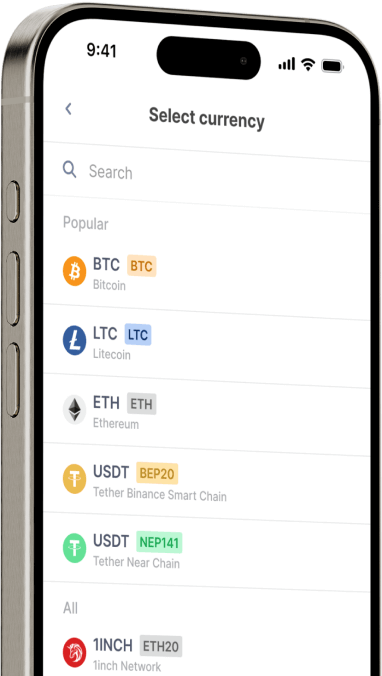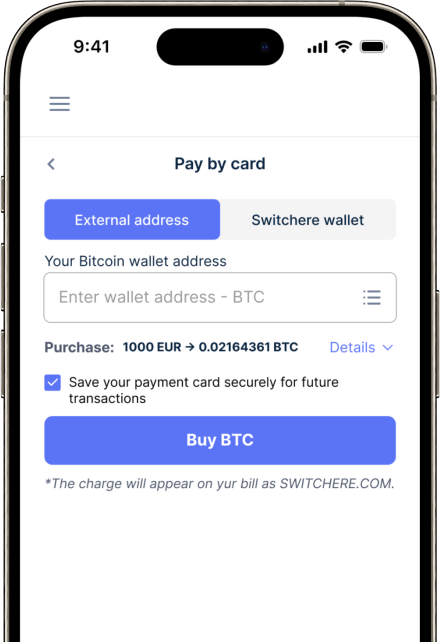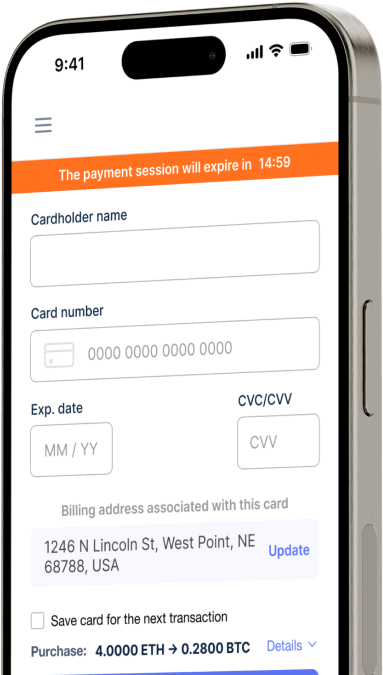Convertir
Saudi riyal (SAR) a Celsius (CEL) al instante
Compre Celsius (CEL) con Saudi riyal (SAR) fácilmente en Switchere y benefíciese de transacciones rápidas y seguras.
Acerca de
Celsius (CEL)
Celsius Network, con su token nativo CEL, surgió como una importante plataforma de finanzas centralizadas (CeFi) diseñada para cerrar la brecha entre la banca tradicional y el mundo de los activos digitales. Su función principal era ofrecer a los usuarios la capacidad de generar rendimiento sobre sus tenencias de criptomonedas y solicitar préstamos con garantía de criptoactivos. La plataforma operaba bajo un modelo de custodia, gestionando los fondos de los usuarios para generar ingresos por intereses a través de actividades de préstamo a prestatarios institucionales. Este modelo la posicionó como una alternativa fácil de usar para los poseedores de criptomonedas que buscaban poner a trabajar sus activos sin tener que navegar por complejos protocolos DeFi.
El token CEL era el núcleo de su sistema de lealtad y recompensas. Como token de utilidad, mantener y usar CEL proporcionaba beneficios tangibles dentro del ecosistema de Celsius, como tasas de interés preferenciales tanto para ganar como para pedir prestado. Los usuarios podían recibir mayores rendimientos sobre sus activos depositados y tasas más bajas en los préstamos, con recompensas a menudo distribuidas semanalmente en forma de CEL. Esta estructura de tokenómica fue diseñada para incentivar la lealtad del usuario e impulsar la demanda del activo nativo. Sin embargo, la plataforma enfrentó importantes desafíos operativos y presiones de mercado, lo que finalmente la llevó a declararse en bancarrota bajo el Capítulo 11, impactando profundamente a sus usuarios y redefiniendo la narrativa sobre el riesgo en la industria de préstamos CeFi.
Comprar otras 150+ criptomonedas por Saudi riyal (SAR)
Otras monedas para Saudi riyal (SAR)
-
SAR a ZRX
-
SAR a 1INCH
-
SAR a AAVE
-
SAR a ACH
-
SAR a ALGO
-
SAR a TLM
-
SAR a ANKR
-
SAR a APE
-
SAR a NFT
-
SAR a API3
-
SAR a APT
-
SAR a ARPA
-
SAR a AUDIO
-
SAR a AVAX
-
SAR a AVAX
-
SAR a AXS
-
SAR a BADGER
-
SAR a BAL
-
SAR a BNT
-
SAR a BAT
-
SAR a BNB
-
SAR a BSW
-
SAR a BSV
-
SAR a BLUR
-
SAR a BONE
-
SAR a CTSI
-
SAR a CELR
-
SAR a CELO
-
SAR a CEL
-
SAR a LINK
-
SAR a CHZ
-
SAR a CHR
-
SAR a C98
-
SAR a COMP
-
SAR a CFX
-
SAR a PEOPLE
-
SAR a CVX
-
SAR a ATOM
-
SAR a CTC
-
SAR a CRV
-
SAR a DAI
-
SAR a DASH
-
SAR a MANA
-
SAR a DENT
-
SAR a DGB
-
SAR a DYDX
-
SAR a XEC
-
SAR a EOS
-
SAR a ETC
-
SAR a ENS
-
SAR a ETHW
-
SAR a FET
-
SAR a FIL
-
SAR a FLOKI
-
SAR a GALA
-
SAR a GNO
-
SAR a ONE
-
SAR a HBAR
-
SAR a HOT
-
SAR a HOOK
-
SAR a ICX
-
SAR a ILV
-
SAR a IMX
-
SAR a INJ
-
SAR a ICP
-
SAR a IOST
-
SAR a IOTX
-
SAR a JASMY
-
SAR a JST
-
SAR a KAVA
-
SAR a KCS
-
SAR a KSM
-
SAR a KNC
-
SAR a LDO
-
SAR a LQTY
-
SAR a LPT
-
SAR a LOOKS
-
SAR a LRC
-
SAR a LUNA
-
SAR a MKR
-
SAR a MASK
-
SAR a EGLD
-
SAR a ALICE
-
SAR a NEAR
-
SAR a XEM
-
SAR a NEXO
-
SAR a NOT
-
SAR a NMR
-
SAR a OKB
-
SAR a OMG
-
SAR a ONT
-
SAR a EDU
-
SAR a OP
-
SAR a OGN
-
SAR a CAKE
-
SAR a PAXG
-
SAR a PENDLE
-
SAR a DOT
-
SAR a POL
-
SAR a QTUM
-
SAR a QNT
-
SAR a RDNT
-
SAR a XRD
-
SAR a RVN
-
SAR a REN
-
SAR a RSR
-
SAR a RLC
-
SAR a RPL
-
SAR a SFP
-
SAR a SHIB
-
SAR a SKL
-
SAR a SXP
-
SAR a STND
-
SAR a STG
-
SAR a XLM
-
SAR a GMT
-
SAR a STORJ
-
SAR a STMX
-
SAR a SUSHI
-
SAR a SNX
-
SAR a USDT (Polygon)
-
SAR a USDT (AVAC)
-
SAR a USDT (BEP20)
-
SAR a USDT (ERC20)
-
SAR a USDT (SPL)
-
SAR a USDT (NEP141)
-
SAR a USDT (FA2)
-
SAR a USDT (TRC20)
-
SAR a USDT (JETTON)
-
SAR a XTZ
-
SAR a GRT
-
SAR a SAND
-
SAR a TFUEL
-
SAR a THETA
-
SAR a RUNE
-
SAR a TON
-
SAR a TUSD (BEP20)
-
SAR a TUSD (TRC20)
-
SAR a TWT
-
SAR a UOS
-
SAR a UMA
-
SAR a UNI
-
SAR a USDC (Polygon)
-
SAR a USDC (SPL)
-
SAR a USDC (OP)
-
SAR a USDC (BEP20)
-
SAR a USDC (AVAC)
-
SAR a USDC (ARB)
-
SAR a USDC (ERC20)
-
SAR a VET
-
SAR a VRA
-
SAR a WAXP
-
SAR a WOO
-
SAR a WLD
-
SAR a WBTC
-
SAR a WMINIMA
-
SAR a XDC
-
SAR a YFI
-
SAR a YGG
-
SAR a ZIL
Cómo comprar Celsius (CEL)
Preguntas frecuentes
-
¿Cuál es el proceso más común para comprar Celsius (CEL) con rial saudí (SAR)?
Un par de trading directo SAR/CEL es extremadamente raro debido a la quiebra de Celsius Network. El método típico es un proceso de dos pasos: primero, usar una rampa de acceso fiat saudí con licencia para comprar una criptomoneda principal como BTC o USDT con SAR a través de una transferencia bancaria local o una tarjeta Mada. Después de completar el cumplimiento de KYC/AML, transferirías ese activo digital a un exchange que todavía liste CEL y realizarías un intercambio de cripto a cripto.
-
¿Cuáles son los principales riesgos de operar con tokens CEL después de la declaración de quiebra del Capítulo 11 de Celsius?
Operar con CEL después de la quiebra es una actividad de alto riesgo. Los riesgos principales incluyen una volatilidad de precios extrema, una liquidez significativamente reducida debido a la exclusión de las principales bolsas y la incertidumbre regulatoria. El valor futuro del token está fundamentalmente ligado al resultado de los procedimientos de quiebra del Capítulo 11 y a los detalles de cualquier plan de reestructuración o liquidación, lo que podría hacer que el token pierda todo su valor.
-
¿Por qué CEL se negocia principalmente en exchanges descentralizados (DEX) ahora?
Tras la declaración de quiebra del Capítulo 11 de Celsius Network, muchos de los principales exchanges centralizados (CEX) retiraron el token CEL de sus listas debido al aumento del riesgo, las preocupaciones regulatorias y la falta de viabilidad del proyecto. Como resultado, el fondo de liquidez restante para CEL se trasladó a los exchanges descentralizados. En los DEX, las listas de tokens no requieren permiso, lo que significa que cualquiera puede crear un fondo de liquidez para un par de trading, permitiendo que el activo continúe siendo negociado a través de carteras sin custodia.
-
¿Cuál era la función original del token CEL en el ecosistema de Celsius Network?
El token CEL era un token de utilidad dentro de la aplicación para la plataforma de préstamos de criptomonedas Celsius. Su función principal era proporcionar beneficios mejorados a los usuarios a través de un sistema de recompensas por lealtad. Al mantener CEL, los usuarios podían acceder a mayores rendimientos en sus activos depositados a través del 'programa Earn', recibir descuentos en los pagos de intereses de préstamos y beneficiarse de lo que la compañía llamaba su modelo de tokenómica 'Flywheel'.
-
¿Existen pasarelas fiat SAR reguladas en Arabia Saudita para la compra inicial de criptomonedas?
Sí, hay varios exchanges de criptomonedas con licencia para operar en Arabia Saudita que actúan como pasarelas fiat SAR. Estas plataformas cumplen con las regulaciones establecidas por el Banco Central de Arabia Saudita (SAMA) y requieren que los usuarios completen un proceso completo de verificación KYC (Conozca a su Cliente). Facilitan la compra de activos digitales establecidos utilizando el rial saudí, generalmente a través de transferencias bancarias locales.
-
¿Qué precauciones de seguridad son esenciales al manejar tokens CEL obtenidos a través de una transacción SAR?
Dado que CEL es ahora principalmente un activo especulativo negociado en DEX, la autocustodia es primordial. Después de adquirir CEL, transfiéralo inmediatamente del exchange a una billetera digital segura y sin custodia donde usted controle las claves privadas. Sea extremadamente cauteloso con las estafas relacionadas con los planes de recuperación o reembolso de Celsius. Verifique siempre la dirección del contrato inteligente del token CEL en un explorador de bloques antes de ejecutar un intercambio para evitar tokens falsificados.




